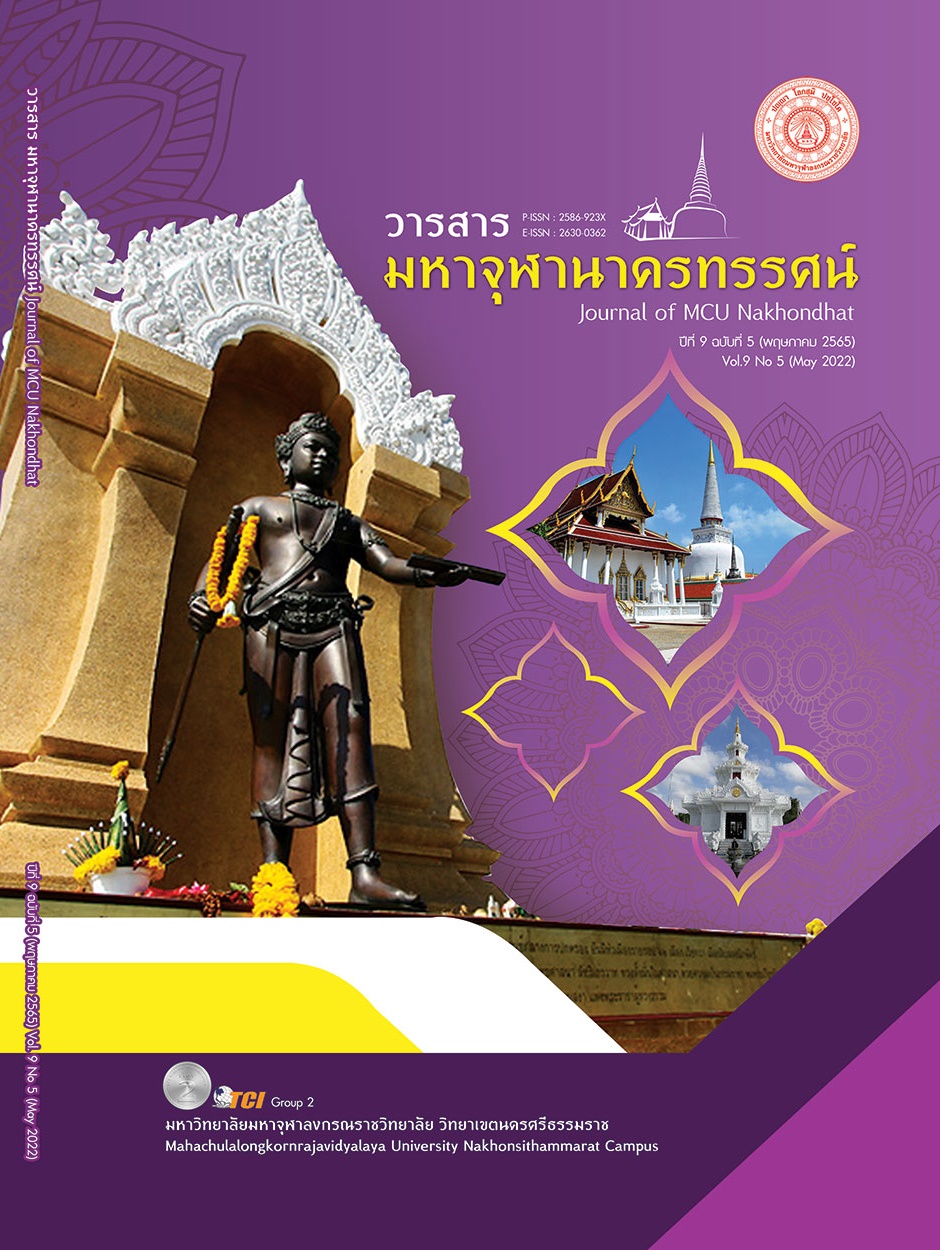THE CREATION OF CONTEMPORARY MOR LAM PLEARN OF SANG SINSAI’S HOOP TAEM
Main Article Content
Abstract
The objective of this research article were to create contemporary Morlam Plearn from the Hoop Taem of Sang Sinsai literature analysis. Data were collected by using Documentary Studies, observation, interview, group discussion and workshop. The delimitation of this research was considered 5 temples that have Sang Sinsai’s Hoop Taem especially in Kinnaree path part. There were 43 informants in this study which are 5 of Key-Informants, 18 of Casual Informants, and 20 of general informants. The information validity and reliability were tested by triangulation, Analytic Induction, and Content Analysis. The study found that the Sang Sinsai’s Hoop Taem analysis led to contemporary Morlam Plearn. In dancing style, there were 120 of new dancing patterns created by based on the model of Mrs. Chawiwan Phantu’s Isan dancing style. Even though the new patterns of dancing were blended with western style of dancing especially ballet like tiptoes standing, foot step and dancing movement, this dance remained the original unique style of Lam Plearn. Music styles in this performance were rearranged in contemporary style, but it still remained Lam Plearn as a main rhythm along the show. The story of Sang Sinsai in Kinnaree path part was adapted to Klonlam texts as a play based on Jinda Duangjai’s model. Cool tones of color such as Indigo, yellow, white, green, brown, and black which present on Sim wall were adapted to the stages and scenes for the realistical show. The custom which is used in this show were designed by Hoop Taem’s characters based on the researcher’s imagination. The customs in this show were mainly held on indigo, green, and yellow according to Hoop Taem
Article Details

This work is licensed under a Creative Commons Attribution-NonCommercial-NoDerivatives 4.0 International License.
References
กิตติกรณ์ นพอุดมพันธุ์. (2554). การสร้างสรรค์งานนาฏยศิลป์ไทยร่วมสมัยจากสัญญะดอกบัวในพุทธศาสนา. ใน วิทยานิพนธ์ศิลปกรรมศาสตรดุษฎีบัณฑิต สาขาวิชาศิลปกรรมศาสตร์. จุฬาลงกรณ์มหาวิทยาลัย.
ขวัญแก้ว กิจเจริญ. (2558). การสร้างสรรค์นาฏยศิลป์จากภาพท่าเต้นของนราพงษ์ จรัสศรี. ใน วิทยานิพนธ์ศิลปกรรมศาสตรดุษฎีบัณฑิต สาขาวิชาศิลปกรรมศาสตร์. จุฬาลงกรณ์มหาวิทยาลัย.
จารุวรรณ ธรรมวัตร. (2520). เพลงพื้นเมืองอีสาน. มหาสารคาม: มหาวิทยาลัยศรีนครินทรวิโรฒ มหาสารคาม.
จินดา ดวงใจ. (2544). นิทาน สังข์ศิลป์ชัย คำกลอนภาคอีสาน. ขอนแก่น: คลังนานาธรรม.
ฐาปนีย์ สังสิทธิวงศ์. (2558). การสร้างสรรค์ละครเพลงร่วมสมัย เรื่องศิลปินผู้บุกเบิกนาฏยศิลป์ร่วมสมัยในประเทศไทย. ใน วิทยานิพนธ์ศิลปกรรมศาสตรดุษฎีบัณฑิต สาขาวิชาศิลปกรรมศาสตร์. จุฬาลงกรณ์มหาวิทยาลัย.
ปรารถนา คงสำราญ. (2554). การสร้างสรรค์นาฏยศิลป์จากจินตนาการของผู้พิการทางสายตา. ใน วิทยานิพนธ์ศิลปกรรมศาสตรดุษฎีบัณฑิต สาขาวิชาศิลปกรรมศาสตร์. จุฬาลงกรณ์มหาวิทยาลัย.
ไพบูลย์ แพงเงิน. (2534). กลอนลำภูมิปัญญาของอีสาน. กรุงเทพมหานคร: โอ. เอส. พริ้นติ้งเอ้าส์.
ยุทธศิลป์ จุฑาวิจิตร. (2539). เอกสารประกอบการเรียนการสอน วิชา 0606201. ใน Aesthetics of Performing Arts สุนทรียศาสตร์ทางศิลปะการแสดง. มหาสารคาม: คณะศิลปกรรมศาสตร์ มหาวิทยาลัยมหาสารคาม.
Malinowski, B. (1916). Magic, Science and Religion and Other Essays. Glencoe: Free Press.
Wilhelm Schmidt. (1939). The culture historical method of ethnology: the scientific approach to the racial question. New York: Fortuny’s.


